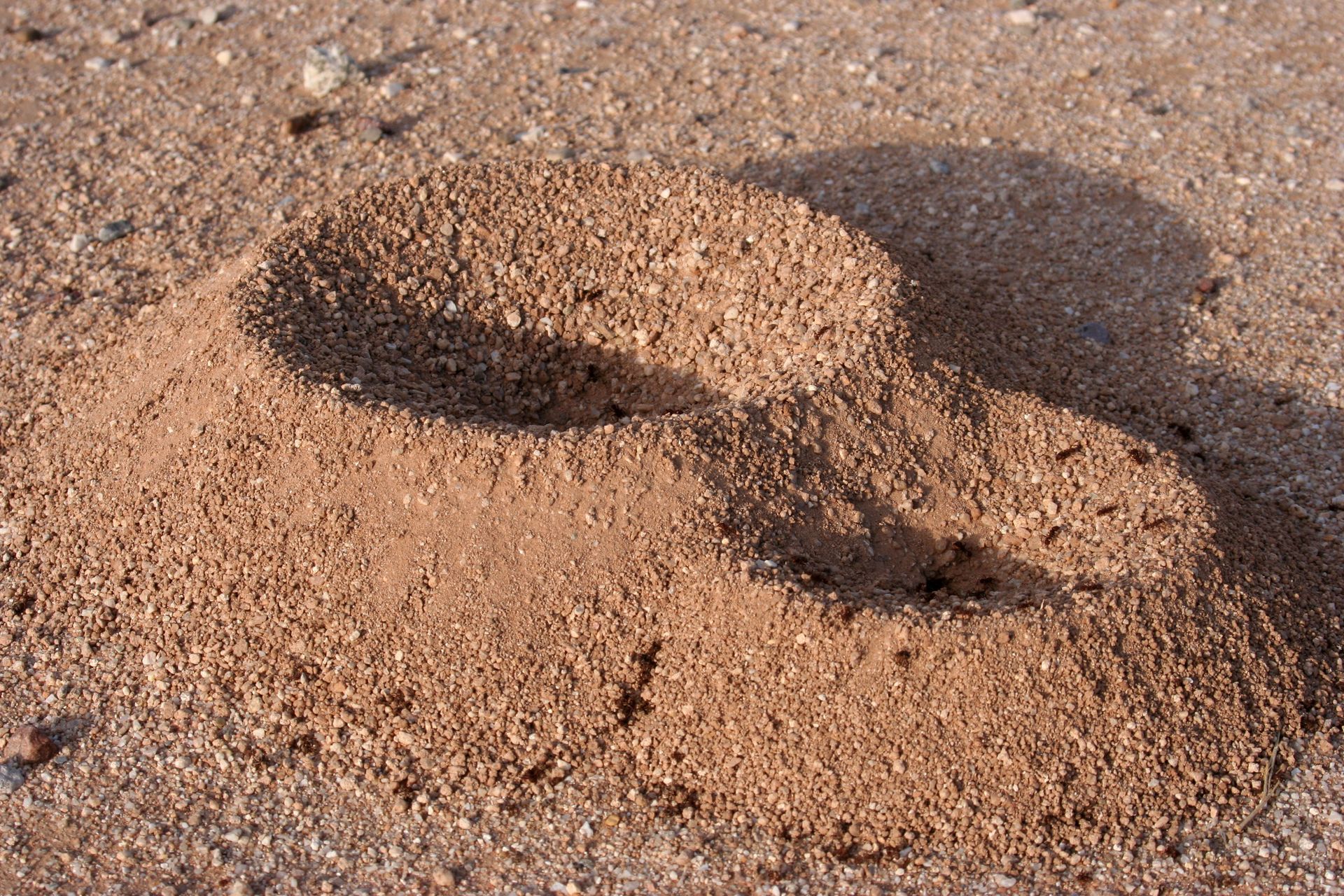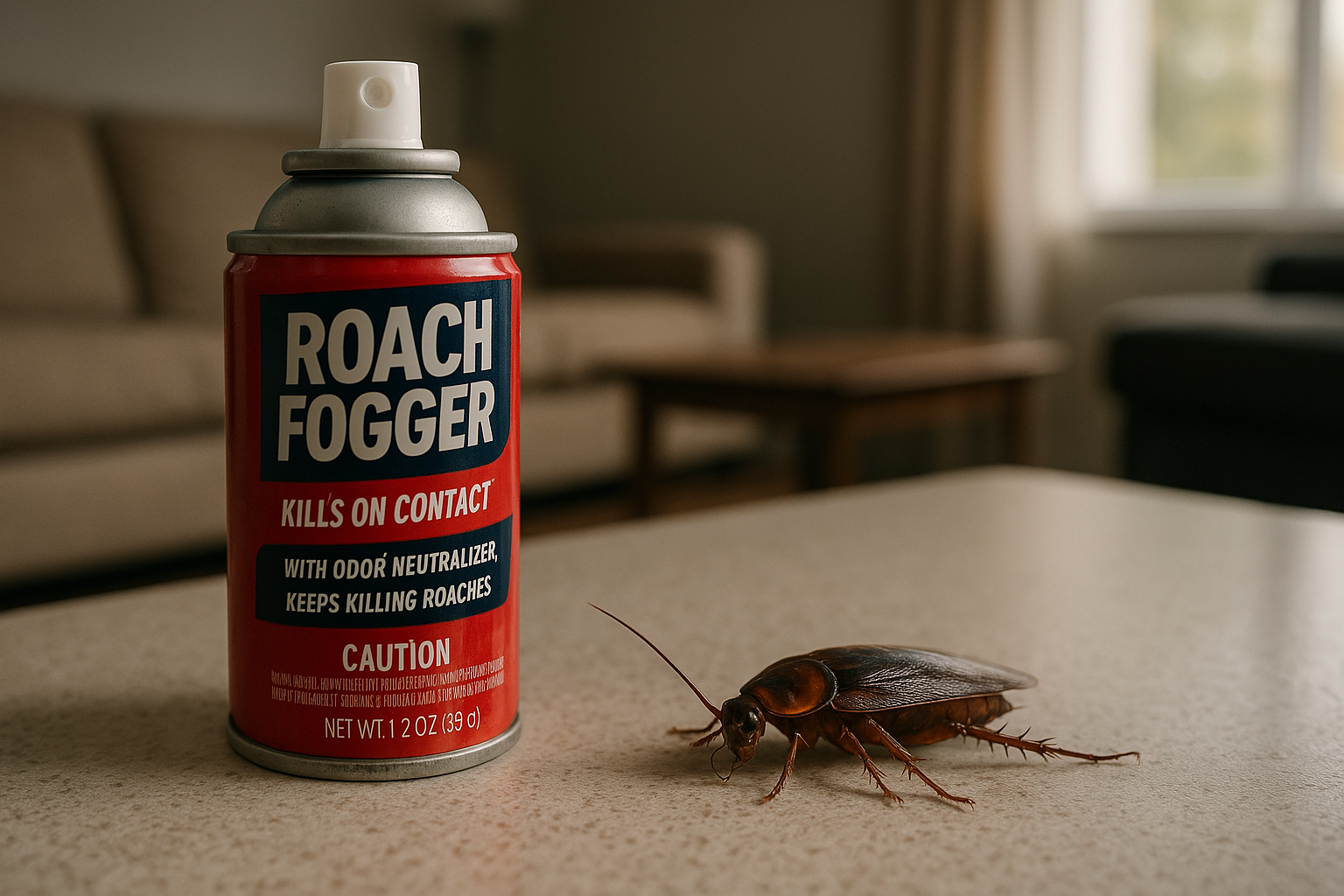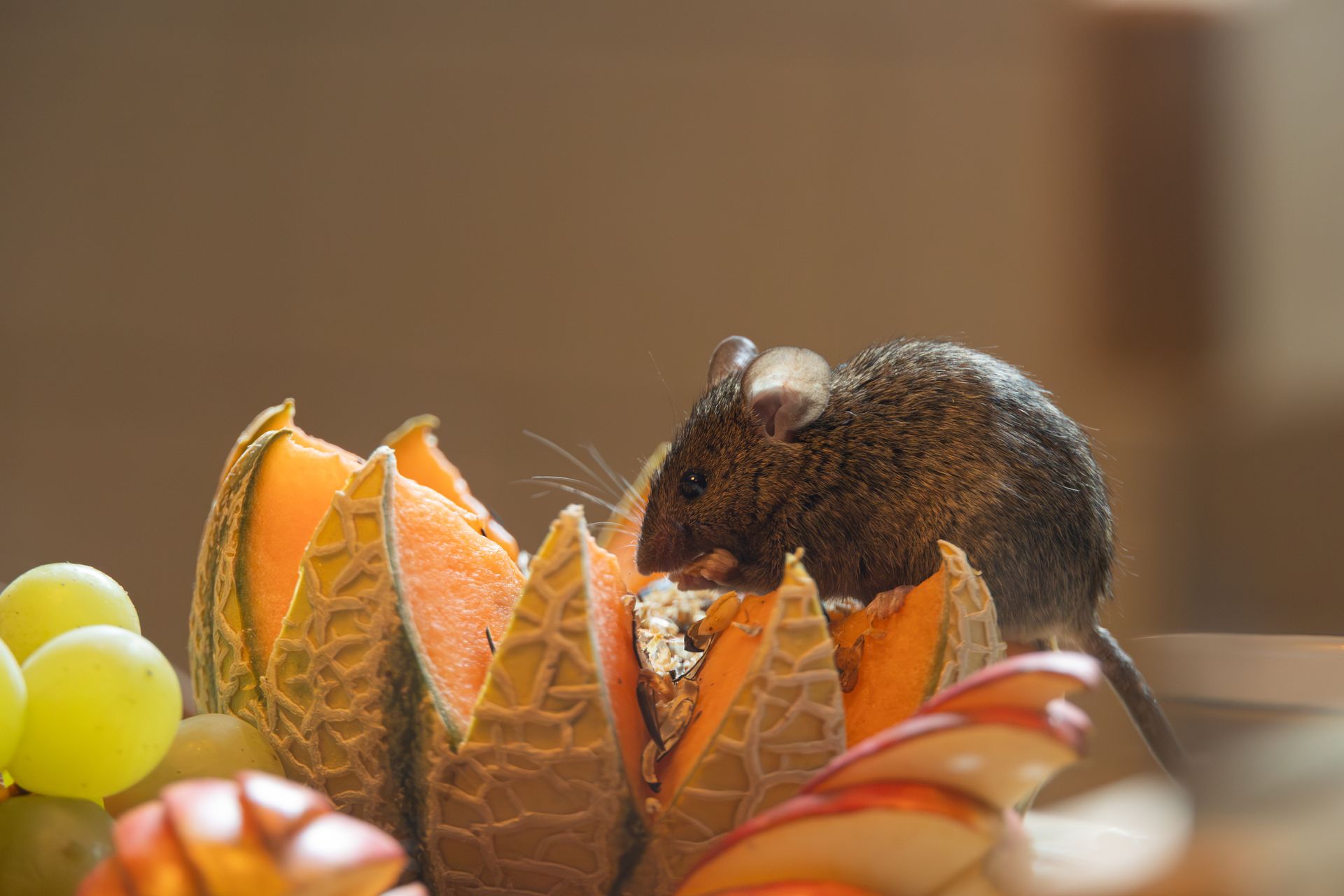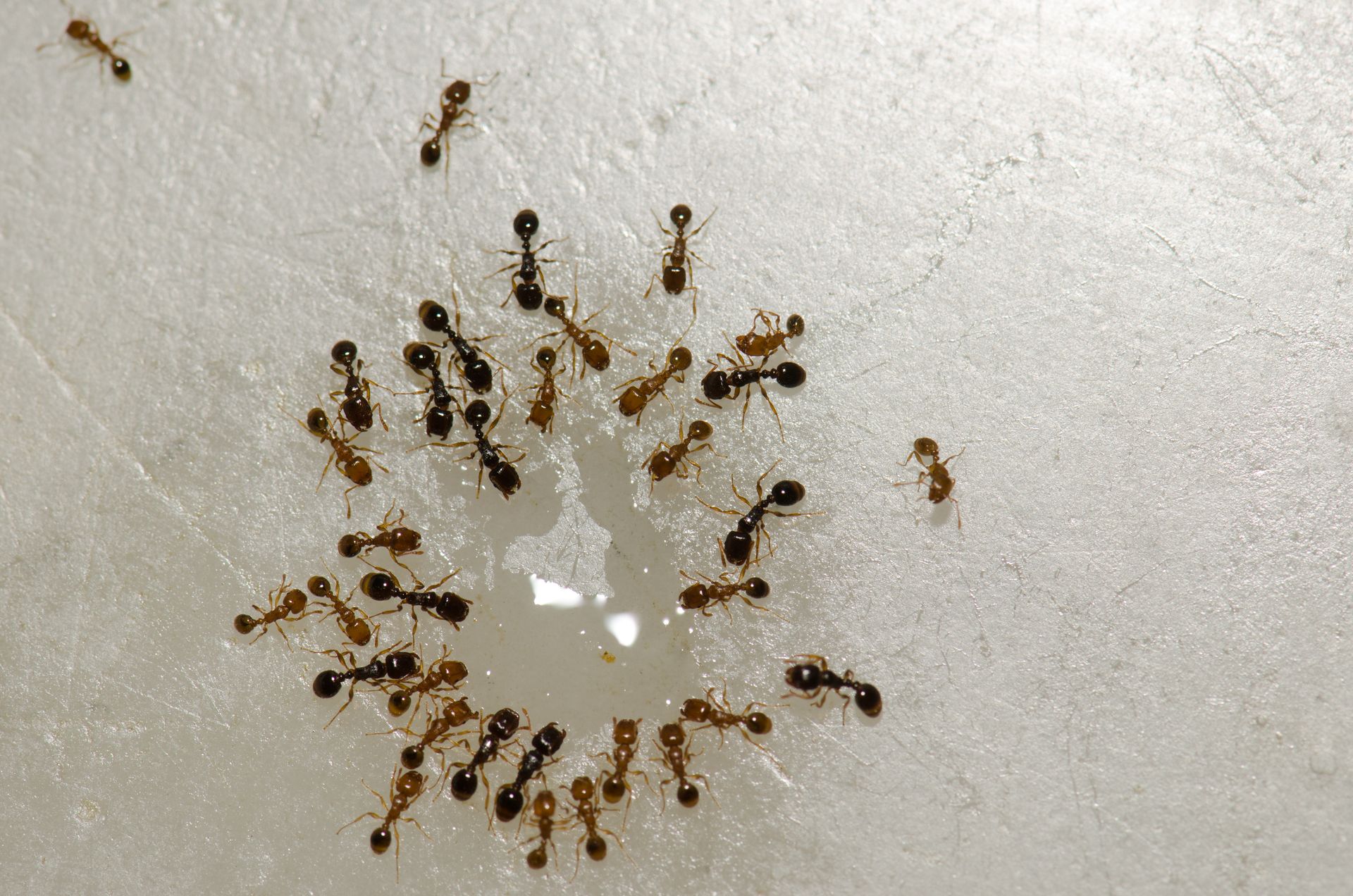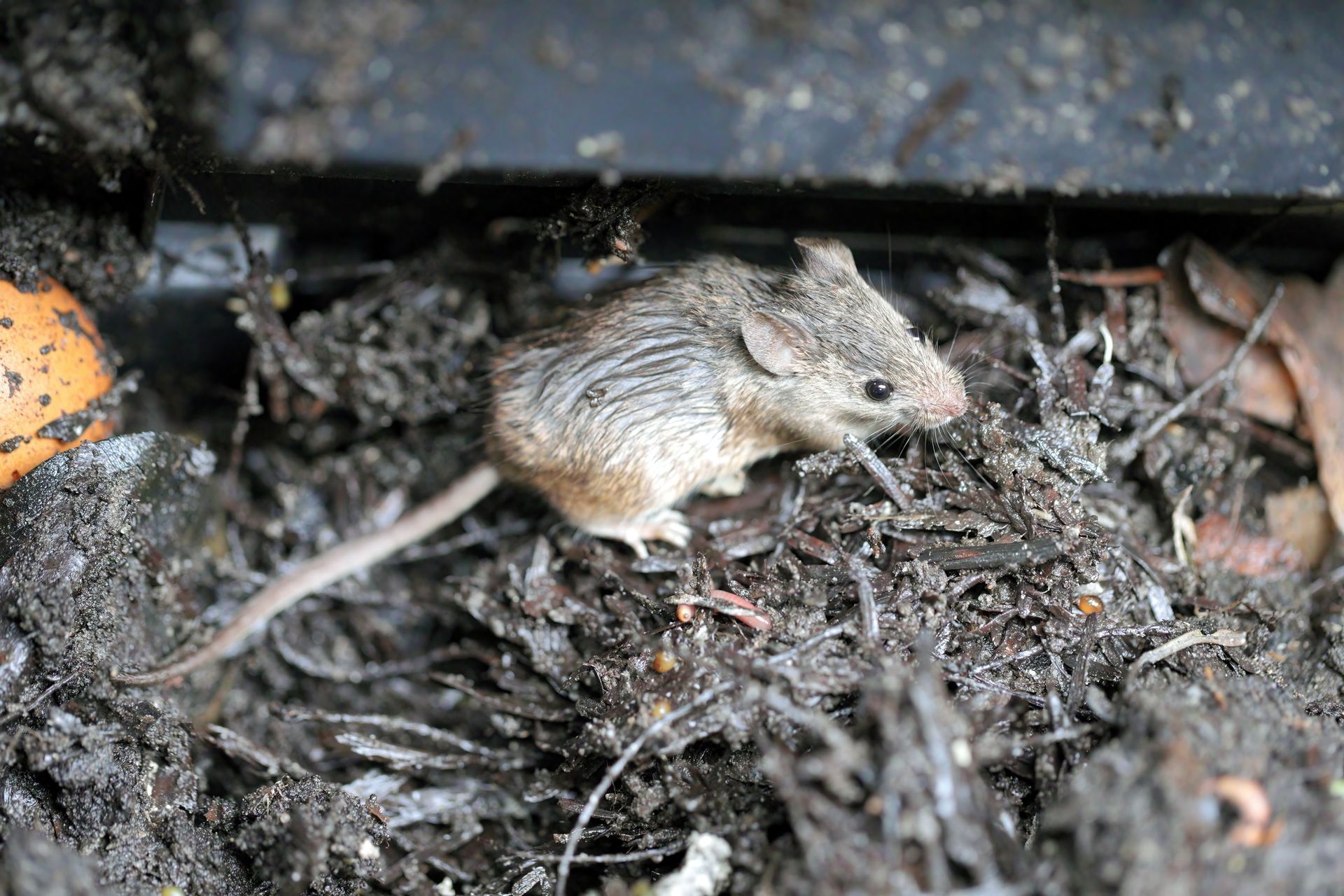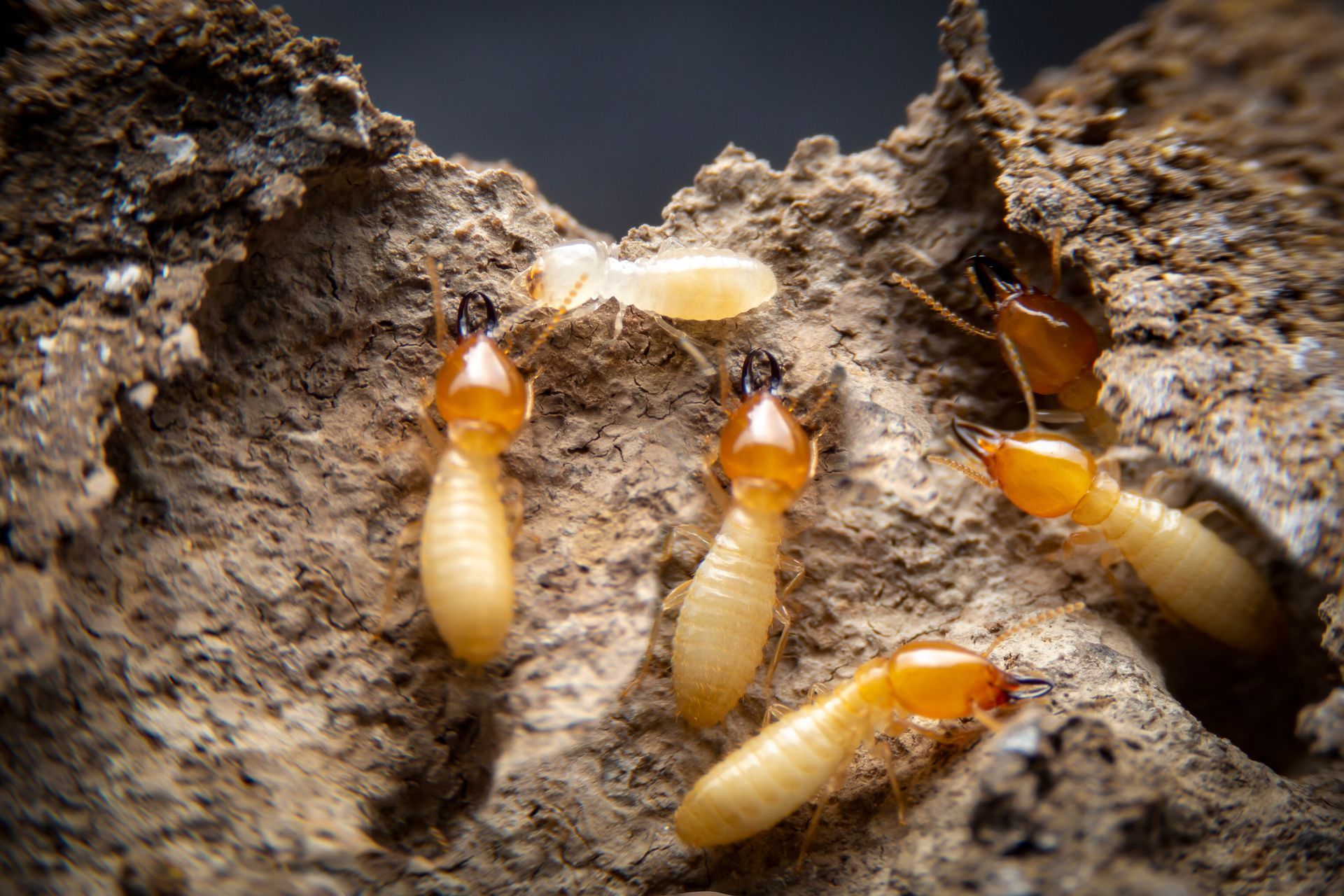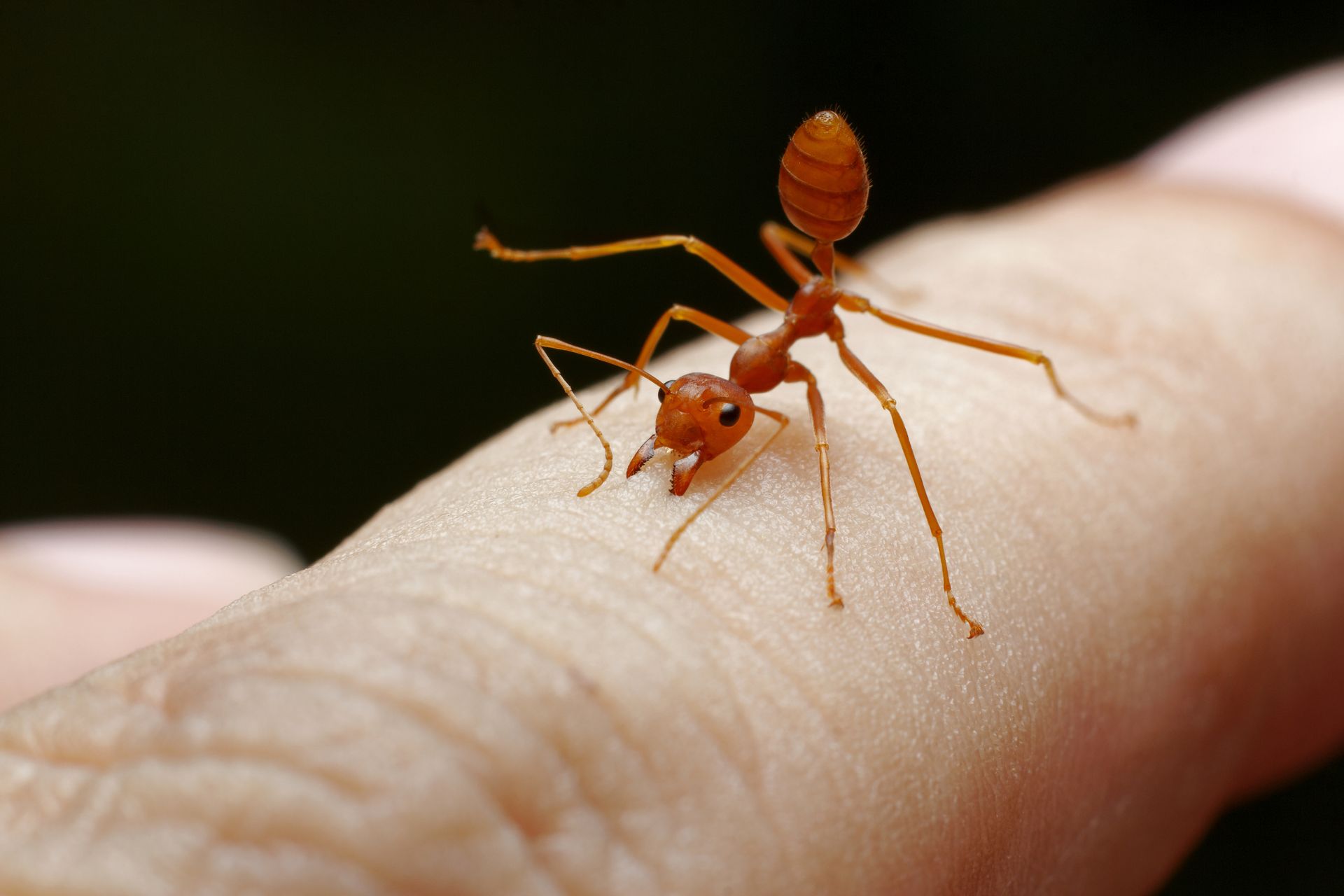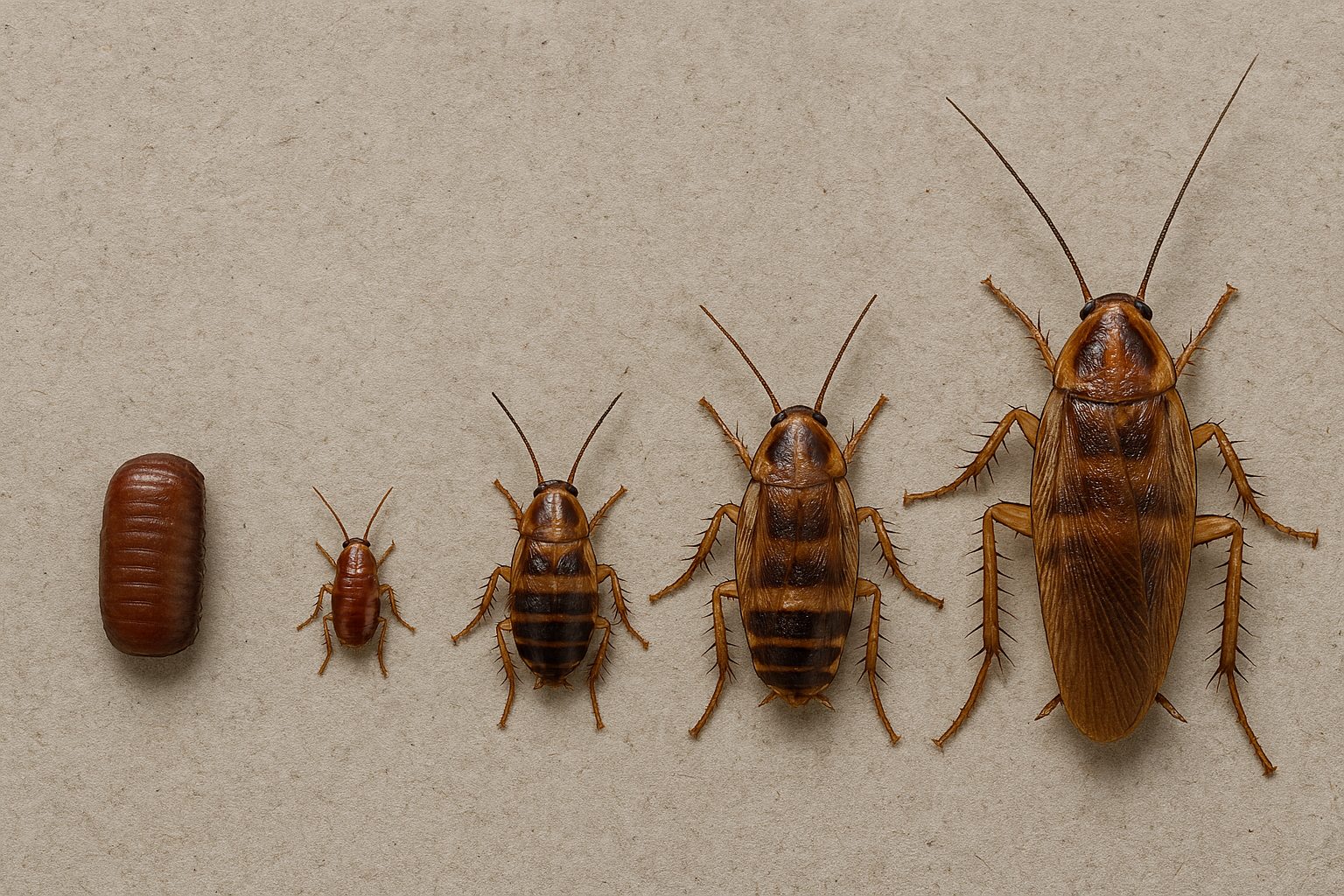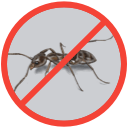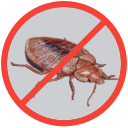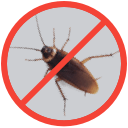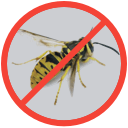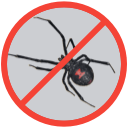Do Carpenter Ants Eat Wood? Understanding Carpenter Ant Damage
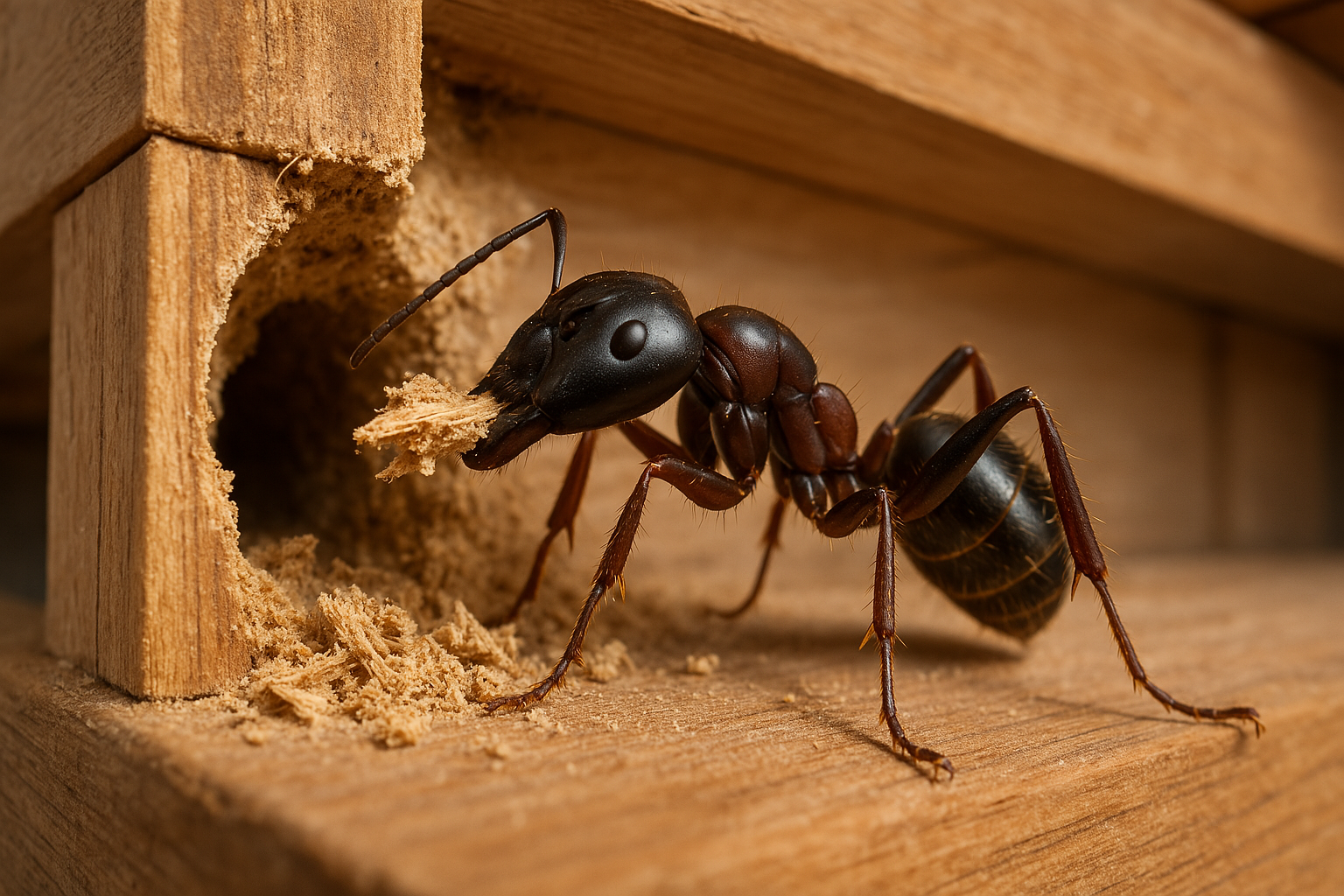
Unlike what their reputation suggests, carpenter ants don't actually consume wood for nutrition. Instead, these industrious insects excavate wood to create elaborate nesting galleries, leaving behind telltale signs that often get mistaken for feeding damage. Understanding this crucial distinction between excavation and consumption can help homeowners better protect their properties from these persistent pests.
The Truth About Carpenter Ants and Wood
Do Carpenter Ants Actually Eat Wood?
Carpenter ants have earned their name through their remarkable ability to work with wood, but not in the way most people assume. These insects are physically incapable of digesting cellulose, the primary component of wood. Unlike termites, which possess specialized gut microorganisms that break down wood fibers for nutrition, carpenter ants lack these digestive adaptations entirely [1]. Instead, their powerful mandibles serve as excavation tools, methodically removing wood particles to expand their living spaces.
The Common Misconception Explained
This widespread misunderstanding stems from the visible damage carpenter ants create. When homeowners discover hollowed out wooden beams or piles of sawdust like material, they naturally assume the ants are consuming the wood. However, what they're actually witnessing is the aftermath of meticulous excavation work. The confusion intensifies because both carpenter ants and termites can cause significant structural damage, leading many to incorrectly group their behaviors together.
What Carpenter Ants Do With Wood Instead
Rather than eating wood, carpenter ants meticulously carve out smooth, polished galleries within wooden structures. These excavations serve as highways and living quarters for their colonies. These insects push excavated material out via tiny holes in their nesting areas. Their waste piles contain rough wood fragments combined with dead insect pieces and various refuse materials. In contrast, termite frass consists of uniform pellets of digested wood without insect parts.
Why Carpenter Ants Tunnel Through Wood
Carpenter ants demonstrate remarkable architectural abilities when constructing their nests. Worker ants use their mandibles to bite off small wood fragments, creating galleries that follow the wood grain. These galleries serve multiple purposes within the colony structure, including nurseries for developing larvae, storage areas for food, and protected pathways for worker movement. The smooth, sandpapered appearance of these galleries distinguishes carpenter ant damage from the rough, soil packed tunnels created by termites [2].
The Purpose of Wood Excavation
The primary motivation for wood excavation lies in the carpenter ants' need for secure, climate controlled nesting sites. Wood provides excellent insulation and protection from predators and environmental extremes. Within these wooden fortresses, colonies can maintain optimal humidity levels crucial for brood development. The excavated spaces also allow for efficient colony organization, with different chambers designated for specific functions like egg laying, pupae development, and food storage.
Parent Colonies vs. Satellite Colonies
Understanding carpenter ant colony structure reveals why infestations can be particularly challenging to eliminate. The parent colony, containing the egg laying queen, reproductive ants, and young larvae, typically establishes itself in outdoor locations with consistent moisture sources. Once the parent colony matures, it produces satellite colonies that can inhabit drier indoor locations. These satellite colonies, composed primarily of worker ants and mature larvae, maintain connection with the parent colony through chemical trail networks [3].
Preference for Moisture Damaged Wood
While carpenter ants can excavate sound wood, they show a marked preference for timber already softened by moisture or fungal decay. Water damaged wood requires less energy to excavate and often provides the humid microenvironment preferred by these insects. This preference explains why carpenter ant infestations frequently begin near leaky pipes, poorly sealed windows, or areas with chronic condensation problems.
What Do Carpenter Ants Really Eat?
Carpenter ants are omnivorous foragers with diverse dietary preferences. In natural settings, they primarily consume other arthropods, both living and dead. Their protein requirements are met through predation on smaller insects like flies, spiders, and moth larvae [4]. They also scavenge deceased insects, playing an important ecological role in nutrient recycling. Perhaps most notably, carpenter ants cultivate relationships with aphids and scale insects, protecting these plant feeding insects in exchange for honeydew, a sugar rich excretion that forms a significant portion of their diet [5].
Indoor Food Preferences
Once carpenter ants establish satellite colonies indoors, their foraging behavior adapts to available food sources. Kitchen areas become prime targets, where workers seek out:
- Protein sources: Pet food, meat scraps, grease residues, and dead insects
- Carbohydrate sources: Sugar, honey, syrup, fruit juices, and sweet beverages
- Fat sources: Butter, cooking oils, and nuts
Carpenter ants demonstrate remarkable memory for food locations and establish efficient foraging routes that follow the same physical pathways year after year. While their chemical pheromone trails are relatively short lived, colonies maintain long term trunk trails [6].
Foraging Behavior and Feeding Habits
Carpenter ant foraging follows distinct patterns influenced by temperature and colony needs. Workers typically forage nocturnally, with peak activity occurring between sunset and sunrise [7]. Explorer ants discover nutrition sites then travel back home, creating chemical pathways that guide colony members to the find. Large food items are dismembered and transported in pieces, while liquids are consumed and carried internally in the crop, a specialized stomach compartment, for distribution to nestmates through trophallaxis (mutual feeding).
Signs of Carpenter Ant Activity
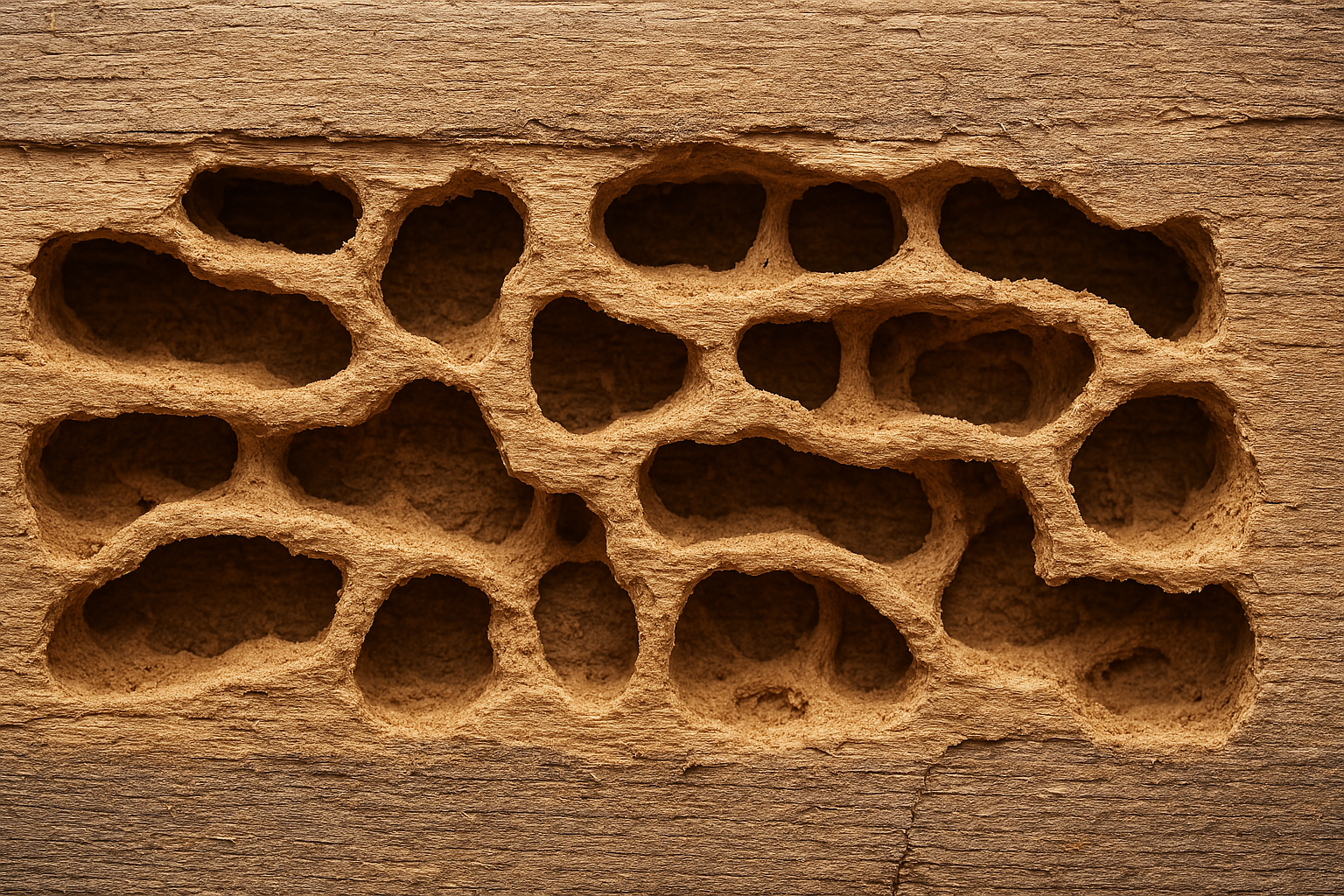
- Sawdust Piles (Frass) Explained: The presence of frass provides one of the most reliable indicators of carpenter ant activity. Unlike the fine, powdery sawdust produced by power tools, carpenter ant frass has a distinctive shredded appearance, resembling pencil shavings or coarse sawdust. This material often contains insect body parts, soil particles, and other debris from within the nest. Frass typically accumulates below nest openings, creating small piles that reappear even after cleaning, indicating active excavation [8].
- Smooth vs. Rough Galleries: Examining the texture of damaged wood reveals important clues about the responsible pest. Their tunnels display polished interior walls that trace natural timber patterns with exceptional precision. These galleries remain free of debris and soil. The smooth finish results from carpenter ants' meticulous excavation technique, where workers carefully remove all loose material from gallery walls.
- Rustling Sounds in Walls: Active carpenter ant colonies produce distinctive acoustic signatures. Homeowners may hear faint rustling, crackling, or crinkling sounds within walls, particularly during quiet evening hours. These sounds result from workers excavating wood and moving within galleries.
- Openings in Wood: Carpenter ants create small, smooth openings in wood surfaces to expel frass and provide nest ventilation. These "windows" appear as clean, round or oval holes, typically 1/8 inch in diameter. Multiple openings often indicate extensive gallery systems within.
- The Appearance of Wood Shavings: Fresh carpenter ant frass has distinctive characteristics that differentiate it from other wood damage. The shavings appear fibrous and shredded rather than powdery, often containing visible wood fibers of varying lengths. Color varies depending on the wood type being excavated. Fresh frass feels coarse when rubbed between fingers, unlike the fine powder produced by wood boring beetles or the gritty, soil like material associated with termites.
- Visible ant trails: Large black workers measuring up to 5/8 inch long moving in organized lines, especially during evening hours, provide direct evidence of colony activity. These trails often lead to and from nest sites.
- Surface irregularities: Painted or finished wood may show subtle sagging, bulging, or rippling where underlying galleries have weakened the structure. These become especially visible in raking light.
- Hollow sounding wood: When tapped, infested wood produces a distinctive hollow or papery sound indicating extensive internal excavation beneath the surface.
Carpenter Ants vs. Termites: Key Differences
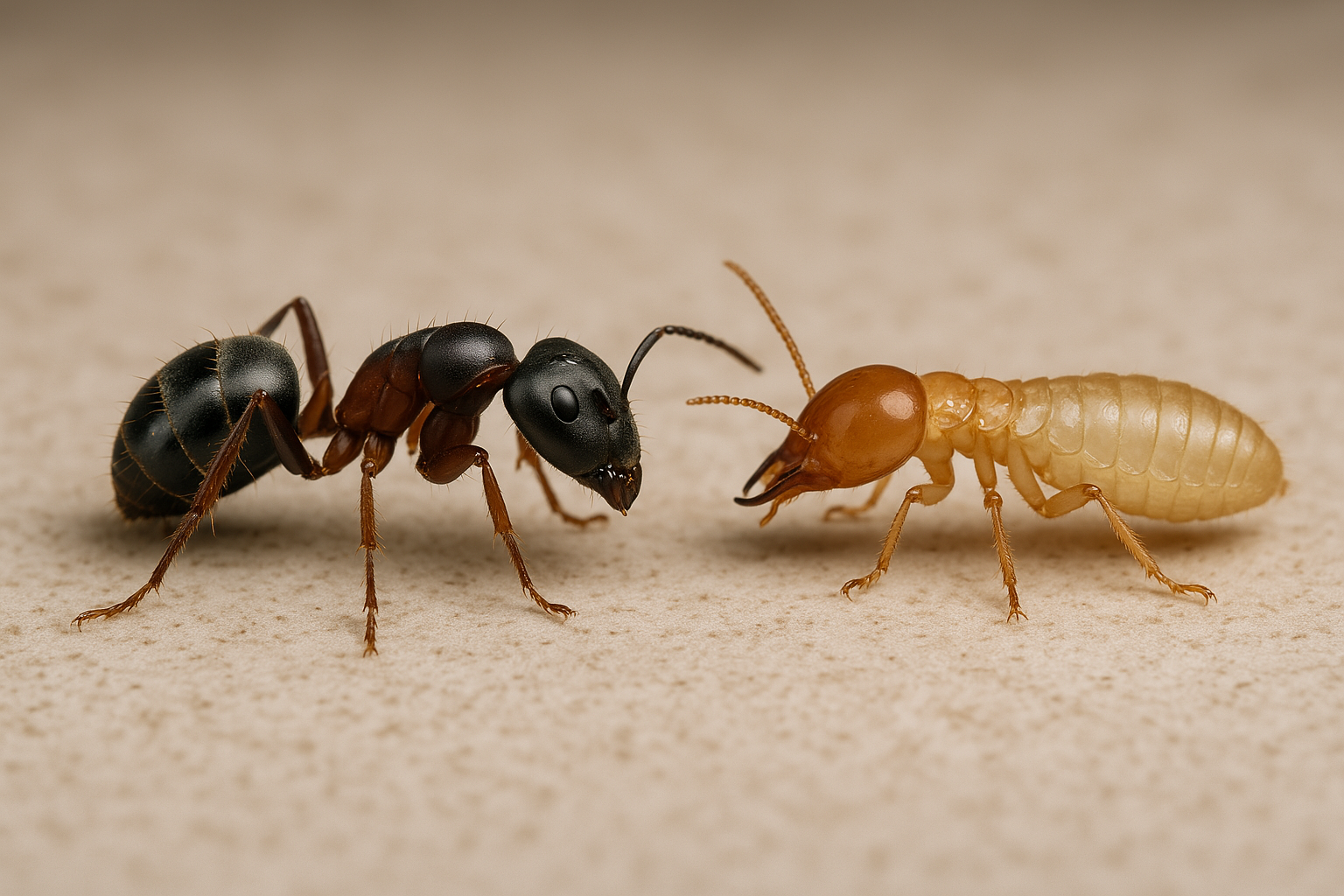
Eating Habits Comparison
The fundamental difference between these wood destroying insects lies in their relationship with wood itself. Termites possess a complex digestive system containing protozoans and bacteria that break down cellulose into usable nutrients [9]. They literally survive by eating wood, consuming it from the inside out. Carpenter ants, conversely, cannot digest cellulose and must seek nutrition elsewhere. This distinction explains why termite damage typically progresses faster and more extensively than carpenter ant damage.
Damage Pattern Differences
Examining damage patterns reveals clear distinctions between these pests:
- Gallery appearance: Carpenter ant galleries follow wood grain with smooth, polished walls. Termite galleries cross grain boundaries with rough, etched surfaces.
- Speed of damage: Termites can compromise structural integrity within months, while carpenter ant damage typically develops over years.
- Mud tubes vs. clean tunnels: Subterranean termites construct protective mud tubes for travel, while carpenter ants create clean trails.
Physical Differences Between the Pests
Accurate pest identification enables appropriate treatment strategies. Key physical differences include:
- Body shape: Carpenter ants display a pinched waist between thorax and abdomen; termites have rectangular bodies without waist constriction
- Antennae: Carpenter ant antennae are elbowed; termite antennae are straight and bead like
- Wings: Reproductive carpenter ants have forewings longer than hindwings; termite wings are equal in length
- Color: Carpenter ants show dark coloration ranging from deep black to rust tones, unlike their pale bodied counterparts
Cost of Damage Comparison
While both pests cause significant damage, the economic impact differs substantially. Termites cause an estimated $5 billion in property damage annually in the United States, with average repair costs ranging from $3,000 to $8,000 per infestation. Carpenter ant damage, while serious, typically costs $1,000 to $3,000 to repair, as their slower excavation rate often allows for earlier detection and intervention.
Types of Wood Carpenter Ants Prefer
Moisture Damaged Wood
Carpenter ants demonstrate clear preferences for wood compromised by moisture. Water damaged timber offers several advantages: reduced structural integrity makes excavation easier and elevated moisture content creates ideal nesting conditions. Common moisture sources that attract carpenter ants include roof leaks, plumbing failures, condensation from HVAC systems, and poor drainage around foundations.
Soft vs. Hard Wood
Wood density significantly influences carpenter ant nesting preferences. Softwoods like pine, fir and cedar are excavated more readily than hardwoods such as oak or maple. However, when moisture compromises hardwood integrity, carpenter ants will readily colonize these typically resistant materials.
Where Are Carpenter Ants Most Likely to Be Found?
Carpenter ants (Camponotus spp.) exhibit predictable nesting patterns based on their biological requirements for moisture, protection, and proximity to food sources. Understanding these preferred locations helps homeowners conduct targeted inspections and implement effective prevention strategies.
Indoor Locations:
Within structures, carpenter ants gravitate toward areas where moisture accumulates and wood remains consistently damp. These locations often go unnoticed until colonies become well established:
- Window sills and door frames: Condensation from temperature differentials and rain infiltration through deteriorated seals create perfect microenvironments. The junction between frames and walls often harbors hidden moisture pockets ideal for excavation.
- Bathroom and kitchen areas: High humidity environments combined with frequent plumbing issues make these rooms particularly vulnerable. Carpenter ants commonly establish behind dishwashers, under sinks where slow leaks go undetected, and within walls containing supply lines or drain pipes.
- Attics and crawl spaces: These often neglected areas suffer from poor ventilation and roof leaks that create chronic moisture problems. Insulation can mask colonies for years while they expand through roof rafters and wall top plates.
- Wall voids and structural cavities: Especially problematic near plumbing penetrations or exterior walls where moisture infiltrates through failed caulking or flashing. Colonies can extend vertically through multiple floors using these hidden highways.
- Subfloor and foundation areas: Critical zones beneath appliances like dishwashers, refrigerators with ice makers, and washing machines where small leaks create long term moisture damage. Sill plates resting on foundations frequently harbor colonies due to condensation and capillary action from concrete.
Outdoor Locations:
Natural outdoor habitats reveal carpenter ants' ecological niche and help predict where they might establish around properties:
- Decaying tree components: Stumps, logs, and fallen branches in various decomposition stages provide ideal founding sites for new queens.
- Living trees with damage: Trees with heartwood rot, old pruning wounds, lightning strikes, or mechanical injury often support large parent colonies.
- Landscape features: Railroad ties, landscape timbers, wooden retaining walls, and decorative wood elements in contact with soil create bridges between natural habitats and structures. Such elements frequently become entry points that facilitate building penetration.
- Firewood storage areas: Improperly stored firewood, particularly pieces in direct ground contact or covered by tarps that trap moisture, provides temporary harborage. Bottom layers often remain damp year round, supporting satellite colonies.
- Wooden structures at grade: Fence posts, deck supports, pergola bases, and shed foundations where wood contacts soil or where splash back from rain creates chronic moisture. These locations often represent the first stage of property infestation.
- Natural cavities and voids: Beyond wood, carpenter ants opportunistically nest in tree hollows, abandoned animal burrows, spaces beneath rocks, and even within thick mulch layers. These alternative sites demonstrate their adaptability when suitable wood isn't available.
The Damage Carpenter Ants Cause Without Eating Wood
Structural Integrity Concerns
Though they don't eat timber, their hollowing behavior weakens buildings by creating void spaces within support materials. Load bearing members weakened by extensive galleries may fail under stress, particularly in older structures where multiple colonies have established over years. The removal of wood material reduces the cross sectional area of structural members, decreasing their load carrying capacity.
Timeline of Damage Progression
Understanding damage progression helps homeowners assess urgency and plan interventions:
- Year 1-2: Initial colonization, minimal visible damage, galleries limited to entry area
- Year 3-5: Colony expansion, satellite colonies form, galleries extend along wood members
- Year 5-10: Multiple gallery systems interconnect, structural weakening becomes measurable
- Year 10+: Severe structural compromise possible, repair costs escalate significantly
Destruction levels increase alongside population growth, as established groups housing several thousand members carve vast tunnel networks. While damage accumulates over years and can weaken structural wood when severe, carpenter ants typically pose more of a nuisance than a threat to structural integrity for at least the first few years of infestation.
Hidden Damage Potential
The concealed nature of carpenter ant galleries presents significant challenges. Colonies often establish within wall voids, beneath insulation, or inside structural members where damage remains invisible until advanced stages. By the time external signs appear, internal damage may be extensive.
Long Term Effects on Property Value
Carpenter ant infestations create lasting impacts on property value through multiple mechanisms:
- Direct repair costs for damaged structural members
- Past pest problems may discourage future property purchasers
- Increased insurance premiums or coverage limitations
- Required disclosure in real estate transactions
- Ongoing monitoring and prevention costs
Differentiating from Other Wood Damage
Accurate diagnosis prevents inappropriate treatments and unnecessary expense. Each type of wood damage creates distinctive patterns that, once understood, make identification straightforward. Powder post beetles leave behind fine, flour like powder that feels silky between your fingers, accompanied by tiny round exit holes about 1/16 to 1/8 inch in diameter. Their damage appears as numerous small tunnels rather than the large, smooth galleries carpenter ants create.
Wood rot presents entirely different characteristics, causing cubical cracking patterns as the wood structure breaks down. Rotted wood crumbles when probed and lacks the smooth, polished appearance of carpenter ant galleries. Mechanical damage from tools or impact shows obvious marks from the damaging instrument and creates splintered, rough surfaces rather than the meticulous excavation patterns of carpenter ants. Natural weathering affects wood uniformly across exposed surfaces, creating a gray, weathered appearance without internal voids or galleries.
When to Inspect Your Property
Strategic timing dramatically improves your chances of detecting carpenter ant activity before extensive damage occurs. Spring inspections during April and May coincide with increased ant activity as warming temperatures stimulate colonies to resume foraging after winter dormancy. This period often reveals winged reproductives emerging from mature colonies, providing clear evidence of established infestations.
Rain events create particularly opportune inspection times, as moisture infiltration may drive ants to relocate, temporarily increasing their visibility. Regular home maintenance activities like annual gutter cleaning and exterior painting naturally provide inspection opportunities. During these activities, homeowners can take advantage of ladder access to examine roof lines, soffits, and upper story windows. Following any plumbing repairs, carefully inspect surrounding wood for moisture damage that might attract new colonies. Property transactions warrant professional inspections to protect both buyers and sellers from costly surprises.
Professional Inspection Benefits
While vigilant homeowners can spot obvious signs, certified pest professionals bring specialized tools and expertise that reveal hidden infestations. Moisture meters detect elevated wood moisture content invisible to the naked eye, identifying areas attractive to carpenter ants before colonies establish. Their trained eyes also recognize subtle indicators that homeowners typically miss, such as minor wood discoloration, faint frass traces, or barely visible trailing patterns. Perhaps most importantly, professionals provide comprehensive documentation suitable for insurance claims, real estate transactions, or tracking infestation patterns over time. This systematic approach ensures thorough property evaluation and appropriate treatment recommendations based on colony extent and location.
Preventing Carpenter Ant Infestations
Moisture Control Strategies
Since moisture serves as the primary attractant for carpenter ants, comprehensive water management forms the foundation of any prevention strategy. The relationship between water and wood creates conditions these insects find irresistible, making moisture control your first line of defense against infestations.
Exterior Water Management
Your home's exterior defenses against moisture begin with proper water diversion. Functioning gutters and downspouts direct thousands of gallons of water away from your foundation annually. This water that would otherwise create the damp conditions carpenter ants seek. Key exterior measures include:
- Ensure downspouts discharge at least 6 feet from your foundation
- Maintain proper grading with a 6-inch drop over 10 feet minimum
- Maintain drainage channels consistently to avoid water spillage and timber decay
- Install splash blocks or drainage extensions where needed
- Fix compromised weatherproofing near exhaust structures and roofline junction points
- Seal foundation cracks with appropriate waterproofing materials
Interior Moisture Prevention
Inside your home, even minor moisture issues can create ideal carpenter ant habitats. That slow drip under the kitchen sink or occasional toilet leak might seem insignificant, but these create exactly the moisture softened wood conditions that attract colonies. Critical interior areas requiring attention:
- Plumbing fixtures: Regularly inspect under sinks, around toilets, and near water heaters for slow leaks
- Crawl spaces: Install vapor barriers and ensure cross ventilation to prevent humidity buildup
- Basements: Use dehumidifiers in damp areas and seal foundation walls against moisture infiltration
- Bathrooms: Maintain caulking around tubs and showers; ensure exhaust fans vent outside
- Attics: Check for roof leaks and ensure adequate ventilation to prevent condensation
- Windows: Replace failed seals and address condensation that saturates surrounding wood
Remember that carpenter ants can detect moisture levels invisible to homeowners. Professional moisture meters can identify problem areas before they become attractive to pests, making periodic moisture assessments a valuable preventive investment.
Wood Maintenance and Storage
Carpenter ants seek out decaying or moisture damaged wood for nesting sites. Strategic wood management reduces available habitat and prevents infestations.
Outdoor Wood Management:
- Store firewood elevated and at least 20 feet from structures
- Remove stumps, rotting fence posts, and decaying landscape timbers
- Replace wooden retaining walls with stone or concrete alternatives
- Inspect and treat deck posts and supports annually
- Keep mulch layers under 3 inches and away from foundations
Indoor Wood Protection:
Water damaged wood attracts carpenter ants and requires prompt attention. Common problem areas and solutions:
- Replace water damaged wood after fixing moisture sources
- Apply borate preservatives to sill plates and rim joists
- Maintain painted surfaces to prevent moisture infiltration
- Use cedar, redwood, or composite materials in moisture prone areas
- Check beneath sinks, around windows, and near appliances for damage
Regular maintenance prevents the moist, decaying conditions carpenter ants prefer for colony establishment.
Sealing Entry Points
Carpenter ants can enter through gaps as small as 1/32 inch. Systematic sealing of potential entry points prevents indoor colonization.
Critical areas to seal:
- Utility penetrations: Pack copper mesh or steel wool around pipes and wires before caulking
- Foundation siding junction: Seal settling gaps with appropriate caulk
- Doors and windows: Install door sweeps, weather stripping, and repair torn screens
- Garage doors: Replace worn bottom seals
- Cracks in foundation walls: Use concrete crack filler or hydraulic cement
- Gaps around vents: Install fine mesh screening behind vent covers
- Sill plate gaps: Seal where wood meets foundation
Regular inspection and maintenance of these barriers ensures continued protection against carpenter ant entry.
Eliminating Food Sources
Understanding carpenter ant dietary preferences helps eliminate the attractants that draw scouts into your home. These opportunistic feeders seek both proteins and carbohydrates, making kitchens particularly vulnerable. However, simply storing food in sealed containers addresses only part of the problem. Those invisible grease splatters behind the stove, the dried spill under the refrigerator, and crumbs in cabinet corners all broadcast "food available" signals to foraging ants.
Pet feeding areas require special consideration. That convenient practice of leaving dry food available all day creates a 24 hour ant buffet. Instead, establish scheduled feeding times and promptly clean any spills. Don't overlook water sources like a dripping faucet or pet water bowl which provide the moisture carpenter ants need to survive indoors. Outside, aphid infested plants near your foundation create natural honeydew farms that attract and sustain ant colonies. Regular inspection and treatment of landscape plants eliminates this food source while improving plant health.
Regular Property Inspections
Regular inspections shift pest control efforts from emergency responses to advance protective measures. Develop a systematic approach that becomes second nature, much like checking smoke detector batteries. Monthly perimeter walks during warm weather take just minutes but can reveal new trailing patterns or fresh frass accumulations before colonies establish.
Seasonal deep inspections warrant more time and attention. Spring and fall assessments should include thorough examination of moisture prone areas like basements, crawl spaces, and attics. Document your findings. Smartphone photos can help create valuable records for tracking changes over time. After significant weather events, particularly heavy rains or rapid snow melts, inspect for new moisture infiltration that might create attractive conditions.
Professional inspections every two to three years provide expert verification of your prevention efforts. These assessments often reveal vulnerabilities invisible to untrained eyes and establish baseline documentation valuable for insurance purposes. Consider them preventive maintenance investments, similar to regular HVAC servicing which are small costs that prevent expensive emergencies.
What to Do If You Find Carpenter Ants
When you discover carpenter ants, avoid spraying them immediately. This kills visible workers but can cause colonies to split and relocate, complicating professional treatment.
Document the infestation:
Photograph ants, damage, and frass piles
Video ant trails to show movement patterns
Note activity times, locations, and ant numbers
Collect specimens in rubbing alcohol for identification
Track ant behavior:
Follow trails to identify entry points and nest directions
Check nearby areas for moisture sources
Watch for movement during nighttime hours as insect behavior peaks
Map consistent patterns over several days
This information helps pest professionals locate nests and plan effective treatment strategies.
DIY vs. Professional Treatment
The temptation to handle carpenter ant problems independently is understandable, particularly for cost conscious homeowners. Over the counter sprays and baits promise quick solutions, and for minor, localized issues, they might provide temporary relief. Some homeowners achieve success with carefully placed bait stations or targeted treatments of visible satellite colonies. The sense of control and immediate action DIY methods provide can be psychologically satisfying.
However, carpenter ant biology creates significant challenges for DIY approaches. Hidden parent colonies, often located outside in trees or landscape features, continuously produce workers that reinvade treated areas. Over the counter products rarely penetrate deep enough into wood to reach established galleries. Worse, improper application of repellent sprays can scatter colonies throughout your structure, transforming a localized problem into a widespread infestation. Without professional grade non repellent treatments and comprehensive moisture assessment, DIY efforts often merely delay inevitable professional intervention.
Professional pest managers bring advantages beyond superior products. They understand carpenter ant behavior patterns, allowing strategic treatment placement for maximum colony impact. Their integrated approach addresses not just the ants but underlying moisture conditions attracting them. Most importantly, professionals provide warranty backed services with follow up monitoring, ensuring complete colony elimination rather than temporary suppression. When structural damage is suspected, their relationships with contractors facilitate comprehensive solutions addressing both pest and repair needs.
Importance of Finding the Nest
Successful carpenter ant elimination hinges on one critical factor: locating and treating the actual nest sites. Surface sprays that kill visible workers provide satisfying immediate results but fail to address the queens and larvae hidden deep within galleries. Parent colonies, often located in trees or landscape features up to 100 yards from your home, continuously send workers to reestablish treated satellite colonies. Without addressing these source populations, reinfestation becomes inevitable.
Treatment Timeline Expectations
Understanding realistic treatment timelines prevents frustration and ensures proper follow through. Initial treatment application often causes a temporary spike in ant activity as colonies react to the disturbance. Seeing more ants during the first two weeks doesn't indicate treatment failure, it shows the treatment is reaching the colony and disrupting normal behavior. Workers become disoriented, abandon normal trails, and may appear in new locations as they struggle to maintain colony cohesion.
By weeks three and four, visible ant activity should noticeably decline. Foraging trails disappear, and random worker sightings replace the organized movement patterns observed initially. This reduction phase varies based on colony size, number of satellite nests, and treatment type. The second and third months represent when nest populations experience major decline. Queens stop laying eggs, larvae fail to develop, and worker populations crash. Some activity may persist as dying colonies make final foraging attempts, but organized trailing ceases.
The monitoring phase extends through months three to six, ensuring complete elimination of all colony components. This period is crucial because premature discontinuation of monitoring allows surviving satellites to rebuild. Professional services include follow up inspections during this period, reapplying treatment if necessary. A full year of monitoring provides confidence in complete elimination, as it covers the complete seasonal cycle and would reveal any surviving colonies attempting to reestablish. Success requires patience and commitment to the full treatment protocol rather than expecting immediate results.
Contact EcoGuard for Carpenter Ant Control
When carpenter ants threaten your home's structural integrity, don't wait for extensive damage to accumulate. EcoGuard Pest Management's certified professionals understand the complex biology and behavior of carpenter ants, enabling us to locate hidden colonies and implement comprehensive elimination strategies. Our integrated approach addresses both the immediate infestation and underlying moisture conditions that attract these wood excavating pests. Using advanced detection equipment and eco-friendly treatment options, we protect your investment while maintaining your family's safety. Contact EcoGuard today for a thorough inspection and customized treatment plan that ensures carpenter ants don't compromise your home's structural integrity. Our experienced technicians will identify all colony locations, eliminate current infestations, and establish preventive measures to keep your property carpenter ant free for years to come.
Frequently Asked Questions About Carpenter Ants and Wood
Do carpenter ants actually eat wood?
Carpenter ants do not eat wood. They lack the digestive enzymes necessary to break down cellulose, the main component of wood. Rather than eating timber, these insects hollow out polished chambers for living spaces while ejecting the resulting sawdust away from their homes. Their actual diet consists of proteins and sugars from insects, honeydew, and various household foods.
What's the difference between carpenter ants and termites?
The primary difference lies in their relationship with wood: termites consume wood for nutrition while carpenter ants only excavate it for nesting. Physically, carpenter ants have pinched waists, elbowed antennae, and wings of different sizes, while termites have straight bodies, straight antennae, and equal length wings. Termite galleries appear rough with mud like material, whereas carpenter ant galleries are smooth and debris free.
Why do carpenter ants tunnel through wood if they don't eat it?
Carpenter ants tunnel through wood to create protected nesting sites for their colonies. These excavated galleries provide climate controlled spaces for raising young, storing food, and sheltering the colony from predators and weather. They prefer moisture damaged wood because it's easier to excavate and provides the humid conditions ideal for their survival.
What do carpenter ants eat instead of wood?
These insects consume diverse foods including both meat based nutrients and sweet substances. Their diet includes living and dead insects, honeydew from aphids, plant nectar, and fruit juices. Inside homes, animal kibble, fatty residues, sticky condiments, and sugary items draw their attention. They also require water and are often found near moisture sources.
How can you tell if you have carpenter ant damage?
Key signs of carpenter ant damage include piles of coarse, sawdust like frass beneath wooden structures, smooth galleries visible in exposed wood, rustling sounds within walls, small clean holes in wood surfaces, and the presence of large black ants, especially winged reproductives. The wood often sounds hollow when tapped, and you may notice wood surfaces that appear irregular or sunken.
Do carpenter ants cause as much damage as termites?
Though each pest weakens buildings considerably, one species generally creates broader destruction at faster rates. Termites can compromise structural integrity within months to a few years, causing billions in damage annually. Carpenter ant damage develops more slowly over several years, allowing for earlier detection and intervention. However, established carpenter ant colonies can still cause severe structural problems requiring costly repairs if left untreated.


